Vanessa works in Don Archie, under the watchful eye of Carl Hester (photo – Libby Law)
Rebecca Ashton talks to Grand Prix dressage rider, and trainer, Vanessa Way – about judging young horse classes – and training with Carl and Charlotte
Vanessa Way is one of those lucky individuals who has been able to spend quite a bit of time working closely with Carl Hester and Charlotte Dujardin. I say lucky, but really it was through hard work and a determined spirit that she managed to find herself a place with the dynamic duo. Although eventing was her first passion, dressage has proved quite addictive for the charismatic Kiwi. Vanessa is born, bred and based in New Zealand and is determined to not only improve herself but the sport is her homeland.
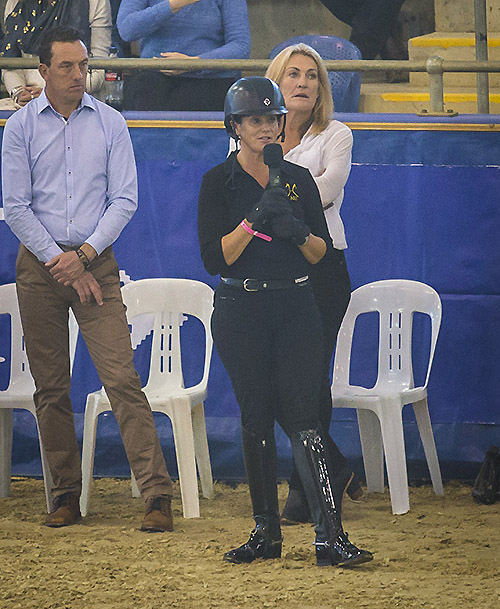
Photo – Rebecca Ashton
I caught up with Vanessa at the Sydney CDI where she was the riding judge for the young horses. I talked to her about her approach, what it’s like behind the scenes at Carl and Charlotte’s yard and the one question I know you want asked… what is it like to ride Valegro?
What did you think of the young horses in the finals today?
To be fair, I was really impressed; impressed with the horses, the quality, the presentation of them, it was a total class act.
Any standouts?
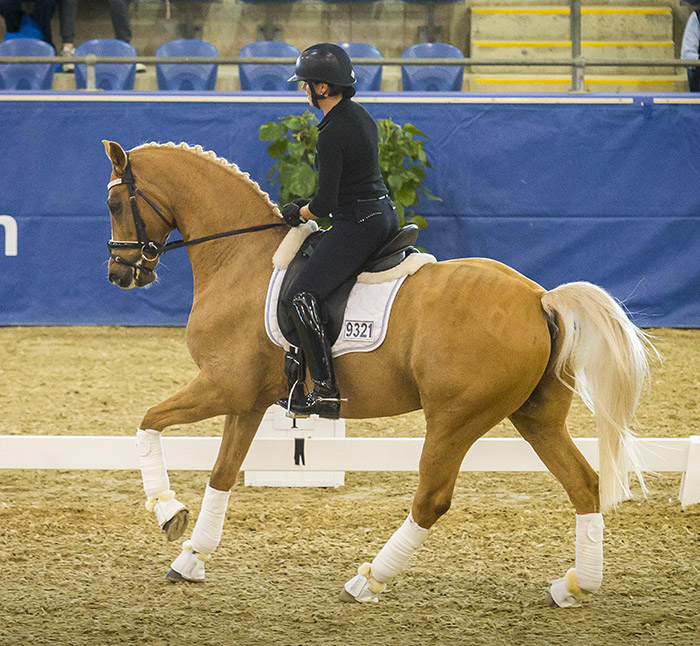
Rebecca and Billionaire – Photo – Rebecca Ashton
I loved the palomino of course (Vanessa awarded the six-year-old Karizmah Billionaire ridden by Danni Walliss 9.5!).
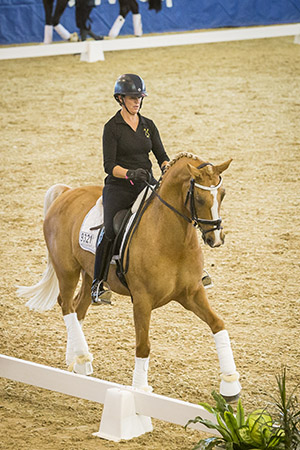
But there were so many lovely moments. When I look back, my first four-year-old, the big horse (Valhalla I ridden by Elliot Patterson), I really liked him. He had a super, even contact. I haven’t been a riding judge before, and I think I was a bit daunted, the size of the canter and I hadn’t ridden all day. I might look 32 but I’m actually not, and to be fair to the horse, I was probably a bit nervous. I think if I could go back on my day and alter anything, I would probably alter his rideability score. As a horse, he was very evenly produced; beautiful in the contact. That would be my correction perhaps. I don’t think it would have affected the total outcome.
It’s very interesting, you just about felt that the four-year-olds were easier than the older ones, but whether that’s because by that time they’re up, and the riders mould them, is likely as well.
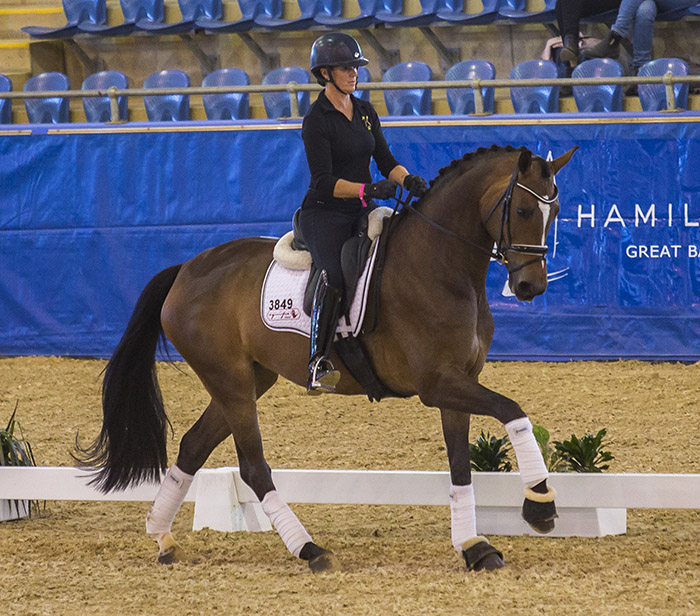
Escala RW. The Escolar mare was awarded a 9 for riding by Vanessa and won the
Four-Year-Old Final at the Sydney CDI. Photo – Rebecca Ashton
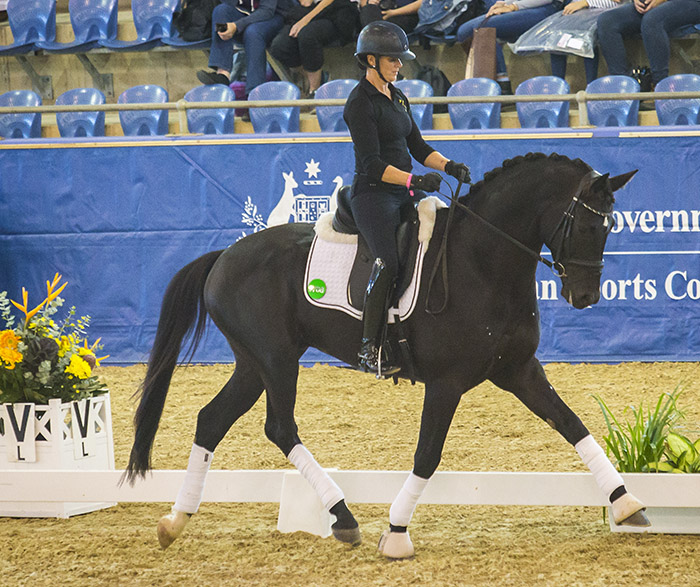
The stallion Bluefields Dankeschon (Desperados) ridden by Lisa Janke was awarded a 9 for ridability by Vanessa and won the Five-Year-Old Final at the Sydney CDI. Photo – Rebecca Ashton
Did you feel any of them were perhaps a bit over organised or over managed?
More so as I went up the grades. I’ve spent a lot of time trying to develop as a rider and a trainer and my job at Mr Hester’s was riding the young horses, and in exchange for riding and competing and training, he always gave me good rides on the Grand Prix horses and I had to retrain my own ideas on Grand Prix, which I would have to honestly say were not great. So I’ve spent a long time being really honest about what you do. When you watch Carl and Charlotte, they do ride with a far lighter contact, so I think that we do try to help horses too much, so that’s what I’ve worked really hard on as a rider, and I go back every year and I ride all their horses and it’s still something that I’m fine tuning; how light those horses over there really are, and how reactive they are to the leg.
more about Carl’s training methods next
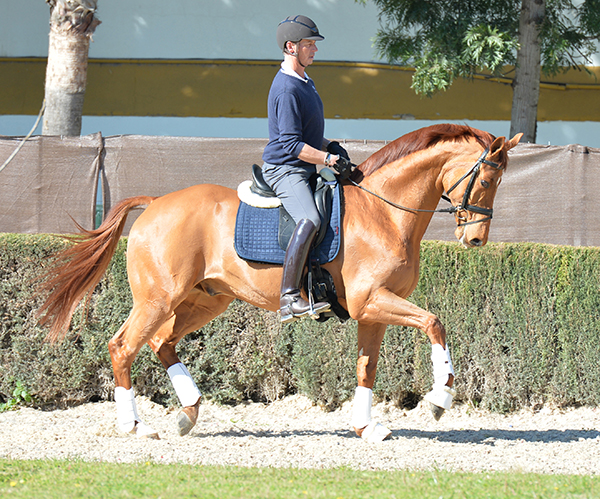
Photo – Roslyn Neave
I know you can’t explain their whole training method in five minutes but what’s the process for getting their horses that light?
I think the number one thing, and people giggle sometimes when they watch me train, but we go into a very forward seat and do a lot of reactions.
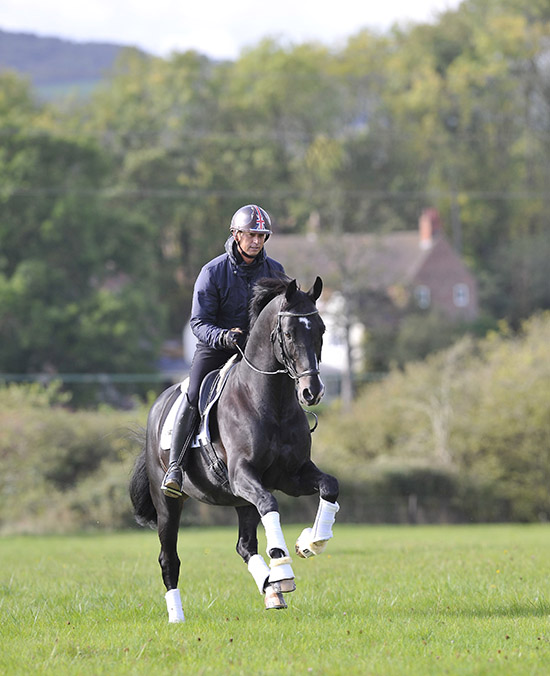
Carl and Uthopia at home Pics. Kit houghton
I think you’ve got to get the horse balanced and you’ve got to get the engine quick. That’s what Carl always says. First of all we’ve got to get the horse forward off the leg. You’ve got to remember that for the horse to be on the bit, it’s because it trusts the hand and you ride it forward and catch the energy gently in your hand and you communicate it back.
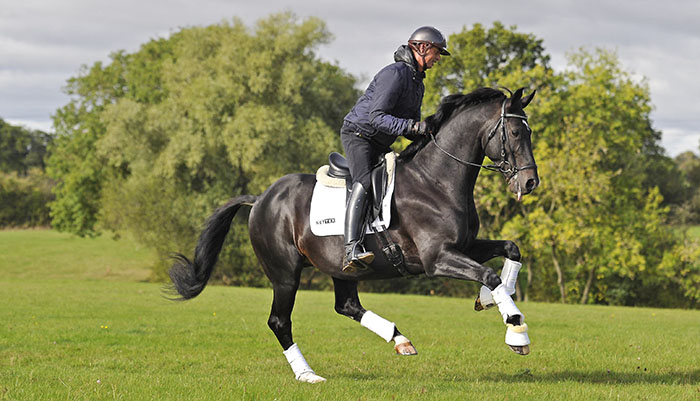
That’s the big thing for me; response to the leg and when the horse is genuinely forward, you’re catching the energy, you’re not pulling back, the horse trusts your hand and it bounces up off the bit.
I think maybe riders try too hard to create a frame, but at the end of the day, the horse creates the frame through correct training.
So would you then say, if you’re getting the reaction from your leg but then the horse is just sitting there in your hand from the energy, you’ve got to play with the lateral work and forward and back?
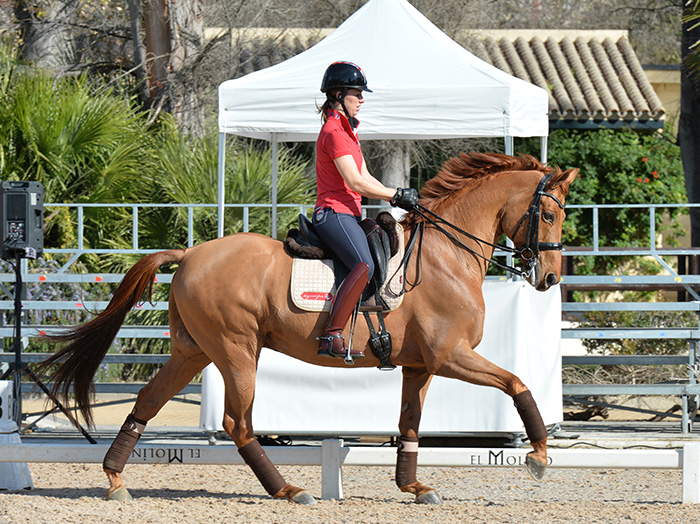
Absolutely and Charlotte used to correct me because she used to say if I didn’t move my fingers she would chop them off. The thing is with your hand, it’s the communication. The horse’s mouth is like your own. I believe if you have a numb hand you have a numb horse. You want a chewy, light feeling rather than taking a hold. We don’t ride with strength, we don’t ride with hardness. It’s like taking a two year old child for a walk. It’s a nice feeling.
I think the bridle is still the most misunderstood thing. I think today there were some horses that didn’t trust the bridle enough and they were a bit light. Those ones we want to push from the hindleg and feel that they can take my hand and are positive. We did have a couple of horses like that, where I was trying to get them to trust my hand and take it and not hide behind it because you still need to feel the horse’s hind legs in your hand in the most beautiful way.
The ones that are heavy need to take more weight in the hind legs so always if it’s on the front, it’s not on the hind legs. There were a couple I kept throwing the rein at because I’m not going to hold them. They have to look after themselves.
more training tips follow
If a horse came to you for training like that, what would be your longer term strategy?
It depends on the age group. We’re very forward on the young horses. We ride with very short stirrups. Carl always says if your heels aren’t down your seat’s not down. So yes with the young ones we’re very forward and off their backs. We were often in jump saddles because we don’t want them on the hand, we want them to react forward and we want to allow the reaction so they’re not getting hit in the mouth or hit in the back because if you’re behind the movement, that’s exactly the same as hanging on their front. So if you’re going to react a horse off your leg, you can’t catch them in the back or the mouth. Both those things are equally as bad as each other.
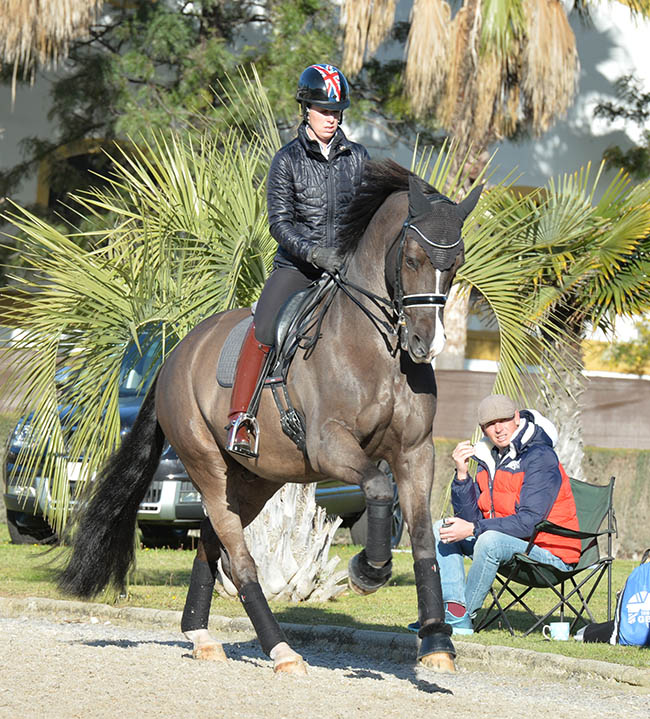
So it’s very forward. People think I’m an unusual trainer but I’m not, I’ve just had brilliant trainers. The first one was Michael Putz who trained all the bereiters. He never rode to a high level but he was always about a perfectly balanced, correct horse.
I’ve got an amazing friend and mentor in Carl. I’ve been going there for 12 years and it’s absolutely perfection in every way and it’s never unfair or unjust. Ever. I can put my hand on my heart and say I’ve never seen anything that isn’t absolutely amazing training. He’s an inspiration in every walk of life. We’re very similar in how we believe horses should go.
If you haven’t been there for a while, what’s the thing that always stands out when you get back there?
I go every year and the main thing I look at when I go is the rein; have you genuinely got the horses in self carriage? Are they really under your seat? Are they really in front of your aids? I keep saying, the older I get, it keeps going back to the Training Scale. You cannot fault it. We can kid ourselves, but if there’s anything in that Training Scale: straightness, contact, you need to address that and be 100% genuine about it. I remember years ago, I was an eventer who went to dressage and I didn’t do it well at all, I didn’t really know, but I remember trainers in the past would say you need to come out exhausted, but I can now say that’s 100% bollocks.
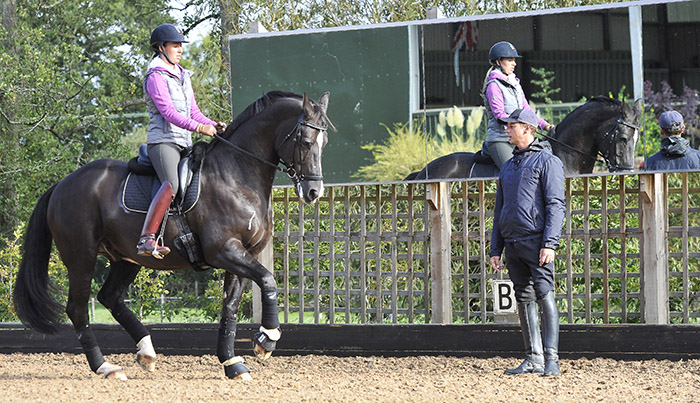
I know now, when I’m riding well I’m more of an artist, just balancing my horse and I’m doing far less so I don’t ride with strength at all in my legs, I try to absorb it in my core as best I can. I’m obviously not Charlotte! But it’s all about riding with feel. What I concentrate on is the art.
I noticed when you rode your back is soft. You don’t drive the horse.
Again, that’s pushing their backs away and that’s why we put the young horses in jump saddles, because you forget the horse has to round its back like a spider and then you tilt the balance around.
That’s why I think sometimes when some riders think uphill, and they actually hollow the horse’s back. No. It’s relative collection. So again, when the riders are behind them, it’s like putting a human on your shoulders and them leaning back. You’re now dragging the weight. It’s like what Carl says heels down, it’s allowing the horse’s back up.
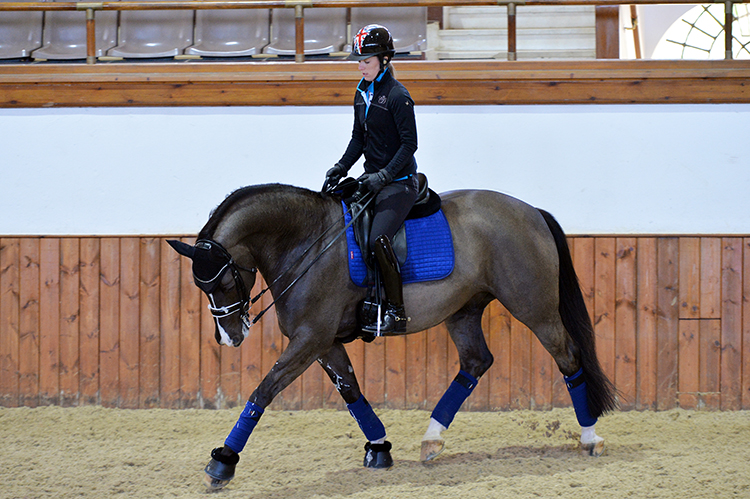
Watch Charlotte ride and if anything you would say she’s more in a forward seat than she’s ever back. She’s never behind the movement. That would be worse because as soon as you’re behind, you’re behind in the bridle and you’re behind in your body. I’m definitely not in their league, but I’m really motivated and keep going there so I can ride the best I can.
How long do you go over for?
I did a year at one point. I went another time and Mr Hester gave me an amazing opportunity to compete his Inter 1 horses. I’ve stayed five or six months, but I have to be careful with my team at home. I’m really lucky. My best friend Abbie Deken lives next door and she’s a Grand Prix rider and I’ve got amazing pupils. It’s now down to a six week period.
So when you come back home and you have to remember everything you’ve learnt and maintain your standard, how do you go about that?
I video a lot. Abbie and I work together on a daily basis. I have good young riders and my teaching helps me the most. I teach about 50-60 lessons a week because I’m self funded. Every time I teach it’s a mental correction to me so I’m getting repeats whether I’m teaching an amateur or whether I’m teaching Grand Prix. I ride the horses from the ground. Carl believes that you cannot teach what you haven’t taught a horse. I’ve taught several horses to Grand Prix now, and every one of them got better because I got better. Now it’s far easier, and it’s easier for the horses because I’m clearer in what I ask.
Back home in New Zealand – Libby Law pic
I’m very much into making it feel good for the horses. My horses all play a little bit with piaffe by five, but it’s definitely a play. But by the time it’s seven it’s very piaffe and my horses would never say no because there’s never a conflict. There’s never a reason to say no.
Do you do other cross training with them?
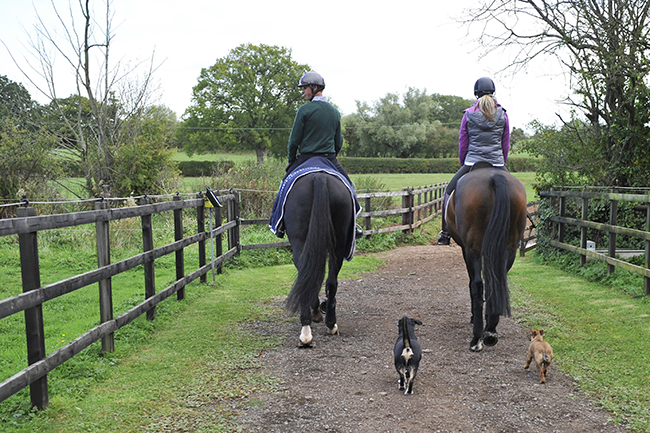
Absolutely. When I was at Carl’s we only ever did four days and I totally follow his programme. We go to the beach and the girls hack them up the hills. They go every day for a hack before they go into the arena and all of them go up the road with cars and trucks. Carl laughed because we rode along the road to the beach and he thought he was going to die but no, my horses are taught to cope….but then I am an ex eventer!
So you’re crazy. Haha.
I am crazy and Abbie hates it.
When did you switch from eventing to dressage?
Oh it was quite a long time ago. I was quite successful to three-star, but I had a terrible rotational fall in 1998 and my horse broke his neck and I broke my back in five places. I had a year off to mend and if you haven’t noticed, I’m a real softy, I’m not a tough trainer, it’s not me.
I just didn’t love eventing anymore. I felt a lot of guilt. Losing a horse like that was the worst thing. I was a crap show jumper so I just fell into dressage.
Then the journey began and I trained my first one to Grand Prix, and I trained with different trainers.
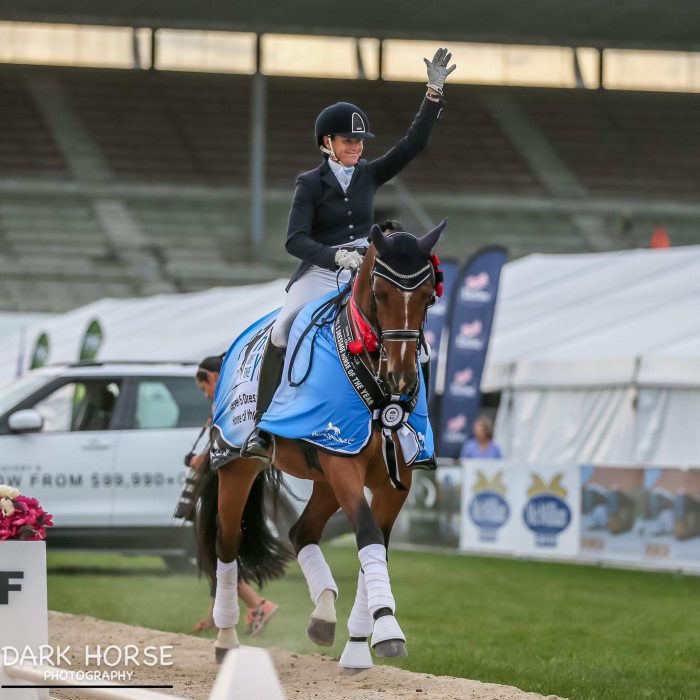
Vanessa and NSC Pronto (by VDL Prestige), New Zealand Horse of the Year 2018
more on trainers comes next
How did you pick your trainers?
I’ve helped eventers my whole career up to Olympic and World Games level and basically I’m very good friends with Vaughn Jefferis and I knew Carl through Vaughn. I’ve always loved him. I was a bit of a guinea pig. He offered me Charlotte’s job and that was going to happen, but then life changed.
So I trained with Harry Boldt and he was incredible. I saw Harry do great things with the Australian eventers, and I thought hold on, he’s an Olympic medalist and he lives in Perth. That’s a lot easier than trying to get Michael Putz from Germany. He’s also got a lot more experience at Grand Prix. Harry was absolutely great to teach me how to ride at Grand Prix. I went from 51% to 66% thanks to him.
Then I thought I needed more so I went backwards and forwards with Carl. He said if I got my qualification for the Olympics, I could go over there and that was my absolute breakthrough as a rider…going and living with him for a year and he gave me a team of horses and he mentored me.
I’d ride my horse and I wouldn’t let any of the others ride him, and Carl couldn’t understand because I was over there to go to the Olympics but no, I was there to improve. The Olympics would have been a bonus, but my aim was to be a better rider.
Then he put me on the B grade Grand Prix horses that Charlotte thought weren’t that great, but I thought they were great. I learnt feel from that and I could mimic that back to my horses. In exchange I had the young horses, and that was my forte in the barn because Carl couldn’t find people to ride them. I’m very black and white. Pressure on, but then take it off and reward. I always think a horse wants to give you the right reaction. When the pressure is on, you have to keep it on until you get the right reaction. You do have to be brave. Katie Bailey was also in the barn and I always said she was fearless. We did have to ride some very sharp, young horses, but once I’m on, I’m on.
I learnt amazing skills. For example, sharp horses need a feel. You couldn’t ride them long. You’d be off in five seconds! I remember the first one doing 360s backwards. Charlotte said keep the bit up in its mouth or else you’re going to be very much on the ground. I learnt a positive pull. You couldn’t stretch some of those sharp ones. You’d get the trust and get the feel. So I learnt.
Why is Charlotte so good?
She’s everything, I suppose. She’s good because of Carl, obviously, she’s had the best horse and the best trainer, but she’s brilliant anyway because she’s got an exceptional natural feel to collection, she’s mentally tough, she’s a competitor. She’s mentally so strong.
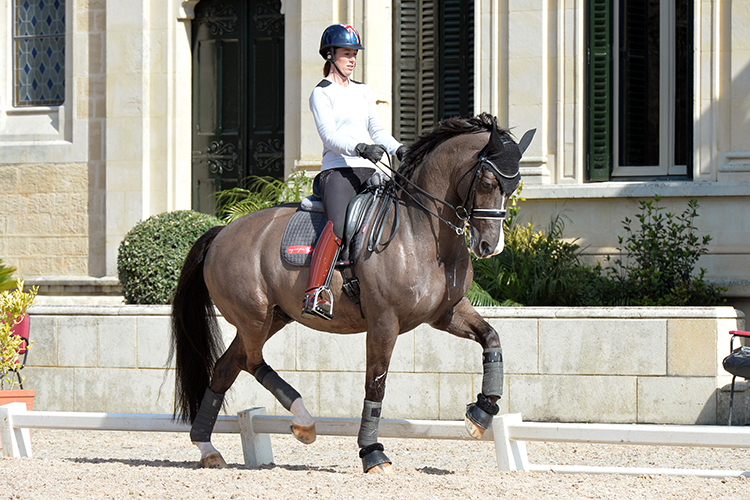
I remember asking her once if she ever got nervous and she looked at me, “Why the hell would I do that? Vanessa, we do the same stuff everyday in a 20×60, what is there to be nervous about?” Good point! Her brain is just not wired like that.
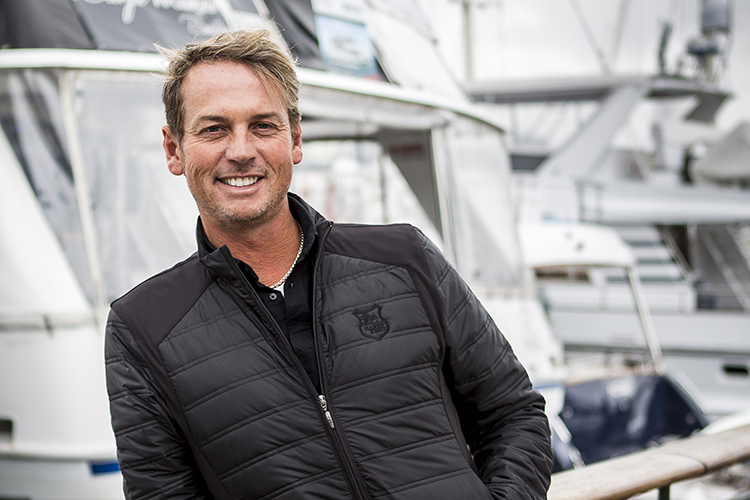
And you can’t forget, Carl is the most incredible mentor. They are the yin and the yang together. Carl loves life so much he could easily take a back seat but Charlotte’s like, “Granddad, get in that saddle.” She keeps him going, keeps him alive. She drives him in a great way. They are the perfect mix. She’d ride them 25 times a day and Carl’s like, no.
I was having a great time over there riding a lot of Carl’s horses like Nip Tuck and Charlotte was like, “Nessy, I’m really sorry but I’m going to have to kick you off it today because Carl’s got to get on the horse. He’s got Europeans next week!”
Carl is so kind though. What other trainer would let you ride their horses? He is the most magic person.
what it’s like to ride Valegro is next
So you’ve ridden all the horses, what are Nip Tuck and Valegro like to ride?
Nip Tuck is very sensitive. He’s a bit long in the back so you’ve got to keep him connected. He’s very light and you can’t ride too fast because he’ll get out of balance. But he’s super obedient, super trained, very sensitive and he is spooky. Shies all the time past C. Everyday. They’ve done the most incredible job. To see the journey from a five-year-old right through is amazing.
Carl wants to show what his training can do. We can’t get scores like that because we don’t ride like that. I keep dreaming!
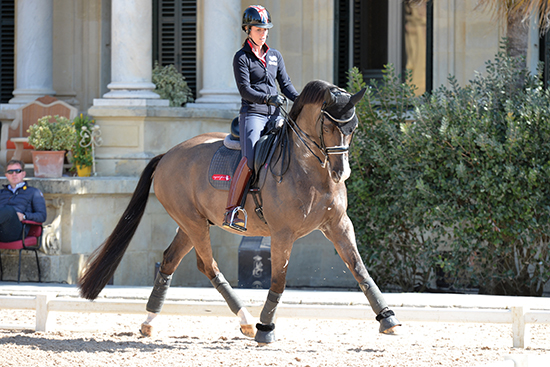
Valegro is unbelievable. It’s got the power, it’s got the reactions, it’s got the sensitivity. Carl says the day it was born it was reactive. It’s a total credit to Charlotte, she’s done an incredible job. She keeps the horse always in front of her leg. It’s got so many gears in it. I remember I was flying around on him thinking I was amazing and Charlotte’s like, “That’s nothing.” Touch a few more buttons and you’re up and literally my cheeks were on the tail. It’s amazing. The power they ride over there, it’s not speed, it’s impulsion. Real impulsion. The horse is so reactive. That one is beyond words to ride. It’s the dream.”
I look at Charlotte and she had several horses to ride before she rode Grand Prix, she trains with the best trainer in the world. You’re not just getting one repeat, you’re getting ten repeats a day so by the end of the week..
There’s absolutely science behind it. You’re delusional if you think it’s a dream. It’s a full package that’s made that happen. Carl was definitely the key to that package. He didn’t have to keep that horse. He saw a vision of a team and that’s what I love about him. That’s his nature with everything.
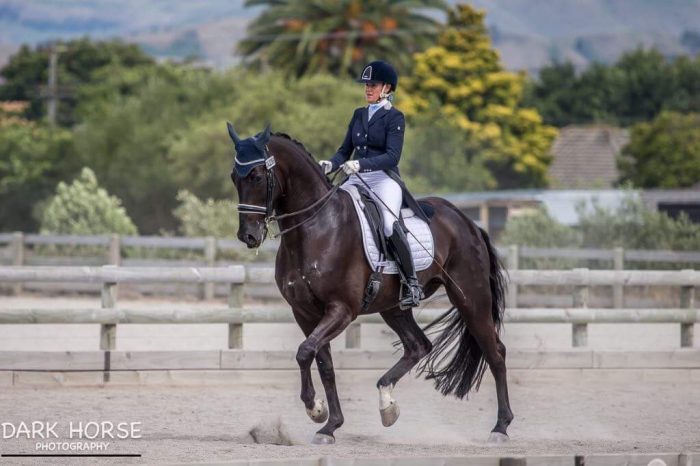
Competing in New Zealand with NRM Andreas, at Level 8
We have a great rapport. He gives me confidence and has given me self belief.You’re from New Zealand so when you go to Europe, you’re nothing. We were always brought up to not have an ego, so to have someone say you’ve got something that they believe in is like, “Really?”
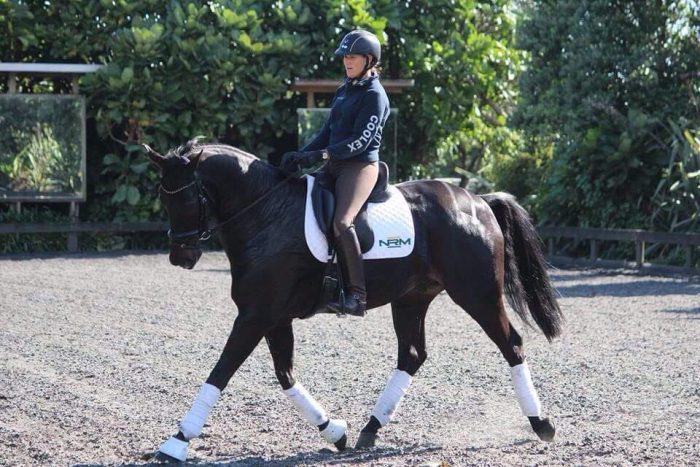
Working at home with her Inter I level horse – NRM Arion by Anamour
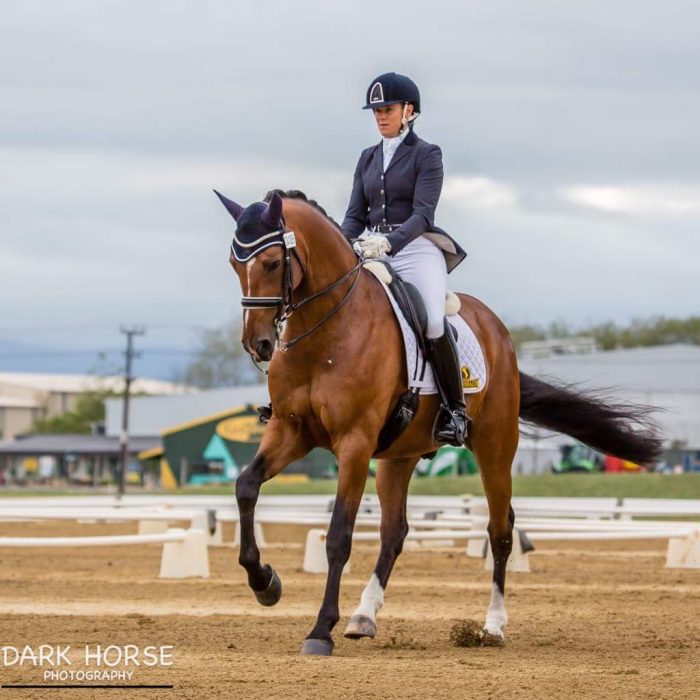
I’m proud of our Kiwi riders. I really believe our training in New Zealand is matching you guys. I’m proud of my fellow riders. A lot of us top riders also work together all quite happily. We are very much on the same page. We don’t have egos. I suppose we’re not dealing with money and most of us own our own horses so we don’t have to fight for owners.
Photo – Libby Law
Stable management. What have you learnt about that from Carl and Charlotte?
Oh it’s natural. Their horses are so happy. They’ve got heat lamps we use in the winter and they’ve got an amazing physio who does a lot of work on the horses. We do a lot of hand walking. Going into the Olympics with medal potential horses, they were hand grazed all the time. I spent more time with Valegro than Charlotte because I was the tether! When they’re not under so much pressure, the horses go into little paddocks for a couple of hours, however, if those horses run, we run. That was a little bit of a motto. If they go fast, we go faster to bring them in. They’re in and out all the time. The young horses live in groups of three or four in ginormous paddocks.
It’s an expert barn but they are treated so kindly. Every Sunday Mr Hester sneaks down and takes a treat for every horse in the barn. He’s just the sweetest man. And you’re in a barn that is producing medals and there is no stress. Everyone is happy. That’s not normal in some barns!
Advice to young riders?
Don’t be in a hurry to win. The worst thing for young riders is to get an ego. So many want to go out and buy a Grand Prix horse. The only way you’re going to do it is time. Give yourself so much time and be genuine to yourself. It’s not about winning and losing, it’s about being the best rider you can be. Obviously getting a good school master helps but you have to learn to be patient, get a good seat, don’t be in a hurry to pull a horse together for a ribbon. Learn classically and don’t specialise too early. You watch Carl and Charlotte, they can jump with the best of them, they know how to use a lower leg. You look at some dressage riders, that’s why they sit behind the horse, they haven’t learnt to use their stirrup as a cushion so they can’t do half sitting/ half standing, they end up pinching with their heels and they all ride with their stirrups too long. No weight through the lower leg? That’s rubbish because your weight has to be absorbed through the heel, hip up, core, head. Be way more pedantic with your own riding. Learn to ride rather than just trying to win ribbons.

Photo – Rebecca Ashton
Looking for a stallion to breed a Grand Prix star? Make your choice from the range of top European bloodlines available from International Horse Breeders: www.ihb.com.au
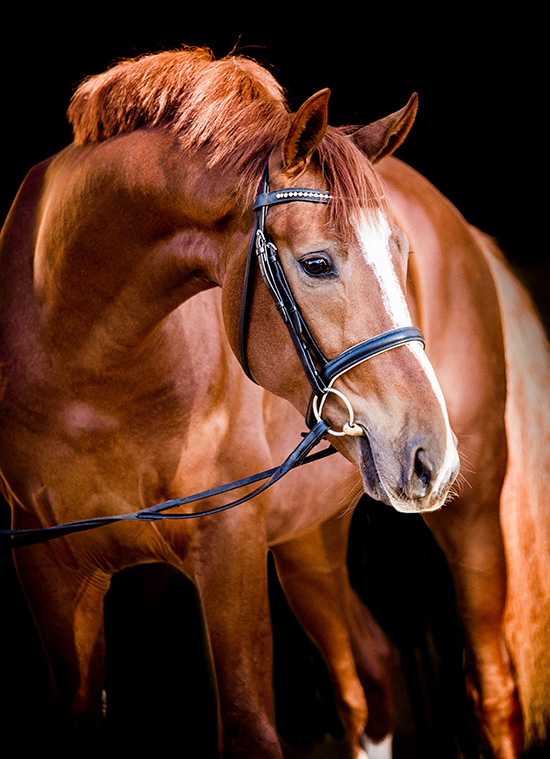
Dohnanyi
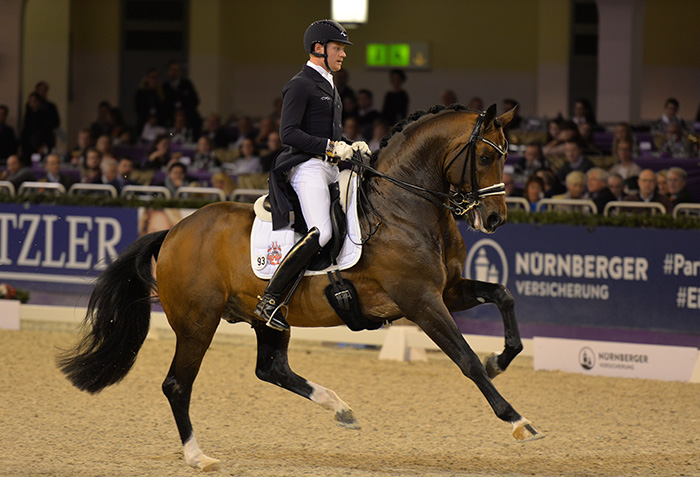
Foundation


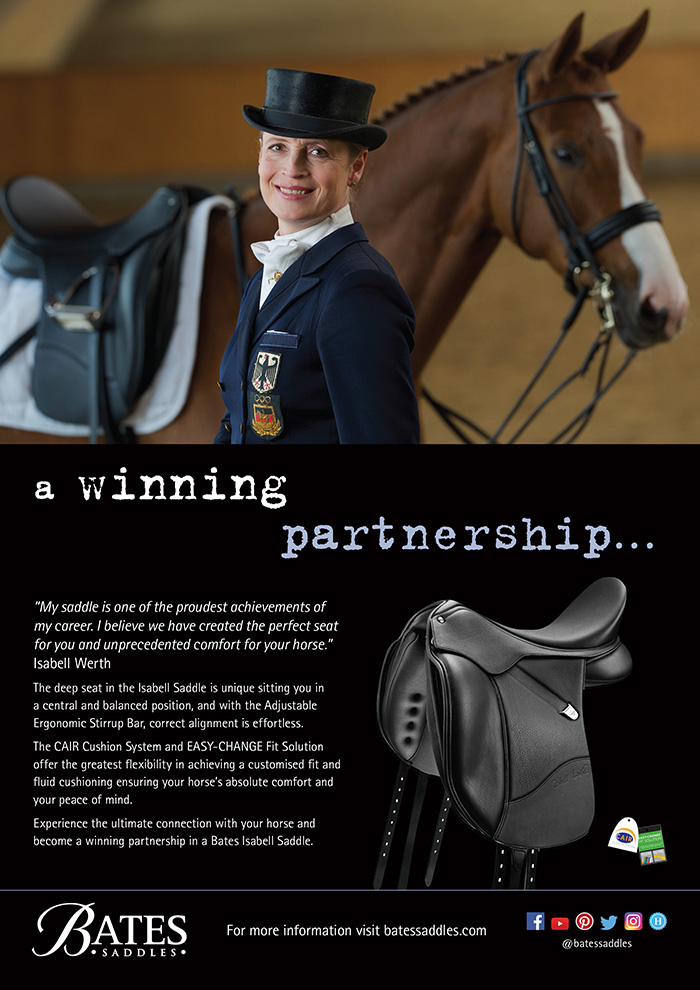
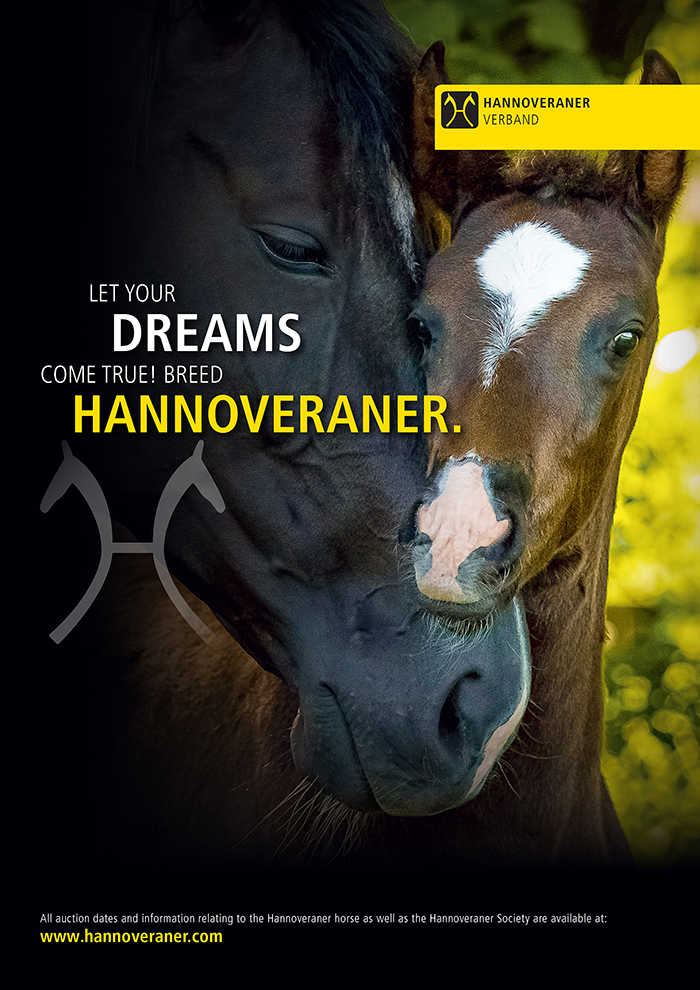

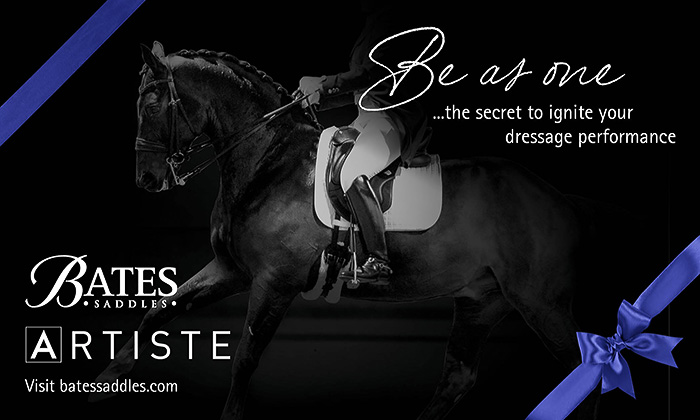
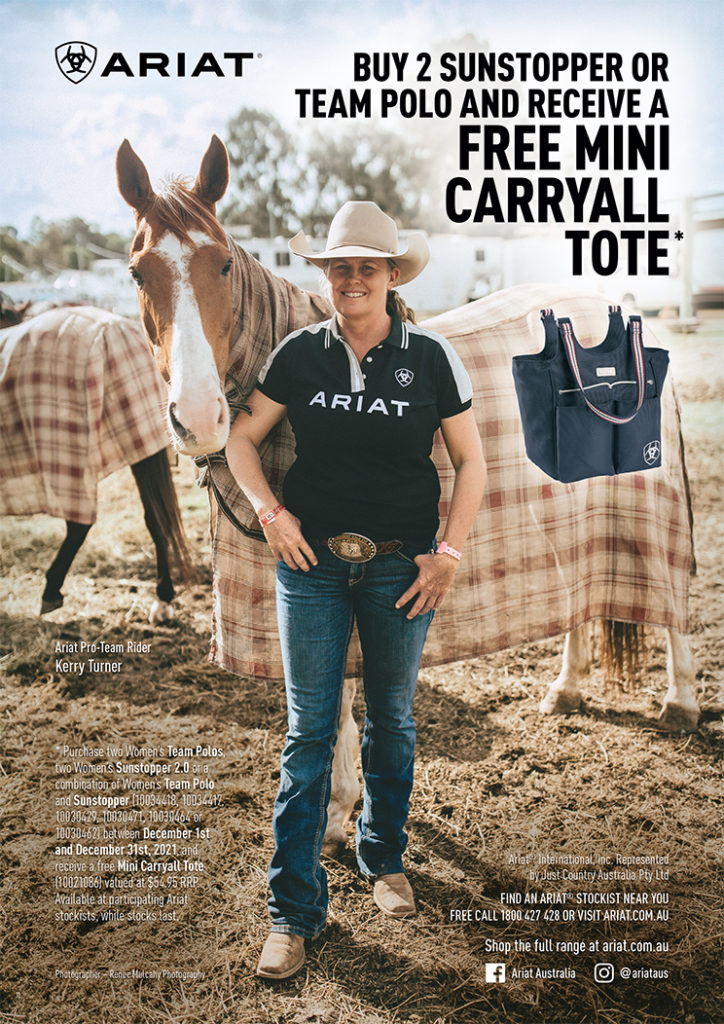
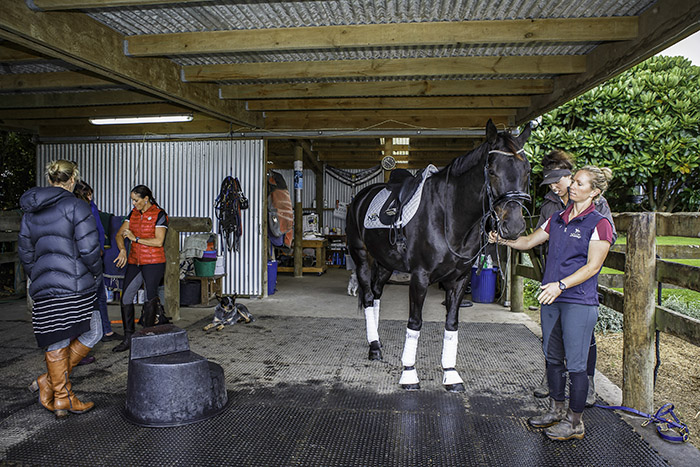
Really super article! So honest and insightful, best luck Vanessa!
Brilliant article. Thank you !!!
Super article. thank you.
Great article
So much feel and honesty
Love it
Fabulous article. I’m 58 and in need of inspiration – you delivered in spades must when I needed it. Thank you .
Great job Rebecca and Vanessa thanks for sharing 🙂 XXXXXXX you guys are inspirational!!! XXX
A truly honest article, from a very honest modest person. Enjoyable reading.
Fabulous article, so inspiring Venessa. I was very fortunate to have some lessons with Carl, not only is he an amazing trainer, he is kind and very entertaining, there were many times I could not ride through laughing. I have always loved the way he rides his horses with the lightest of contact and sensitivity. Good luck Vanessa for the future. Bxx